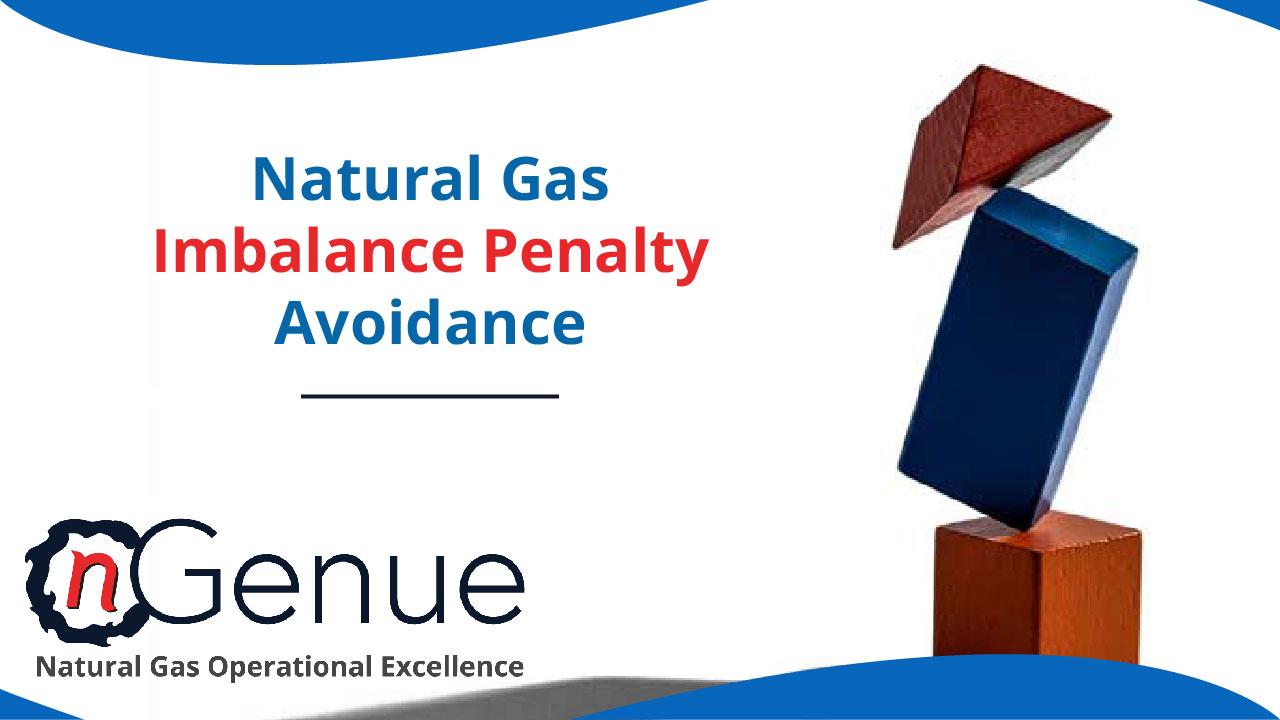
Natural Gas Imbalance Penalty Avoidance
Considering the temperature swings we have already experienced this winter, this post is timely. How are you doing so far, in terms of imbalance penalties? Are you equipped to minimize imbalance? Most natural gas businesses are not. When an organization runs its operations manually on spreadsheets, mistakes are inevitable and the cost of those mistakes can have a significant financial impact. Allow me to share the story of a natural gas retailer’s imbalance nightmare; one that many marketers suffer when Mother Nature’s unpredictability wreaks havoc on natural gas forecasts.
This REP comprises 1,500 commercial customers behind PGLC in the Chicago area. Its operations team has varying degrees of experience and was running the business on spreadsheets. As most marketers do, they take advantage of PGLC’s positive storage capability by injecting during low-priced months for withdrawal during peak months. Regardless of how customers are managed (pooling vs. standalone accounts), this injection approach translates into savings for customers and additional profit margin for the marketer. And this was the strategy … during July, August, September, and even into October, they were pushing storage capacity to a planned 90%; that was, until unexpected temperatures upended the plan.
Initially, winter was unseasonably warm and the injected balances were not decreasing at the expected pace. Then came the discovery of a formula error on a spreadsheet that managed ~500 of the standalone accounts. When the file was copied over for the New Year, it broke the weather forecast formula, hard-coding the previous year’s unseasonably cold weather forecast numbers. Not surprisingly, when the monthly reads and statements came in, the planned 90% storage balance was actually closer to 120%.
Another wrinkle was that while the Chicago area basked in the fluke warm weather, this marketer was still injecting gas during the first week of December. And, while they were still injecting gas, PGLC responded correctly to the warm weather by reducing nominations to zero to throttle back the balances. What a Scheduler overlooked was that PGLC not only has rules limiting injection rates, but also limits how quickly you can withdraw from storage. The result was hefty penalties for excessive storage balances in November, excessive withdrawal in December and again excessive storage balances in January. Attempts to negotiate with the LDC were unsuccessful and the marketer ended up having to absorb close to half a million dollars in penalties.
The obvious question is, how could this have been avoided? This marketer took steps to remedy the issue by correcting its formula and making staffing changes to ensure the most experienced people were working the most important tasks, but those actions didn’t address the more significant issue of the inherent limitation of spreadsheets. As handy as spreadsheets can be, when they reach a certain size and/or quantity, it is an almost certainty that something will go awry. This experience led the marketer to acquire nGenue, centralizing its data, implementing risk analyses, instituting alerts, and enabling up to the minute auditability. Well-designed natural gas operational software prevents spreadsheet errors because it presumes people make mistakes and provides systematized analysis, checks and balances that identify obvious oversights before it’s too late.
End Users, LDCs, Marketers, Pipelines, Producers, and Utilities face increasing competitive and compliance pressures, requiring increased operational efficiency, data integrity and, process improvement. Their operational systems must support this, but most don’t. Engage us and we’ll show you how to make a breakthrough. It’s what we do for natural gas companies, and we are experts in our field.
~Ken